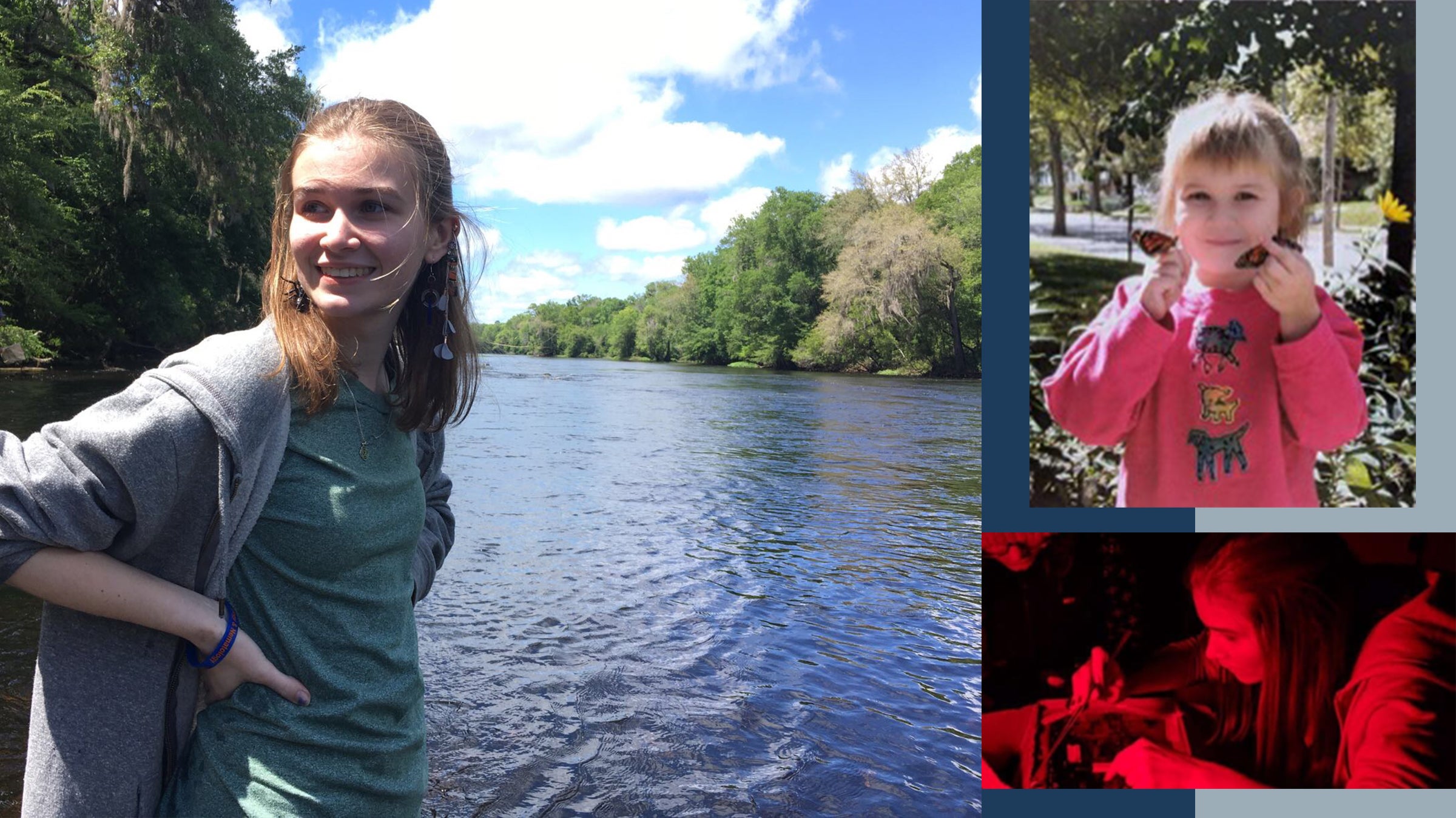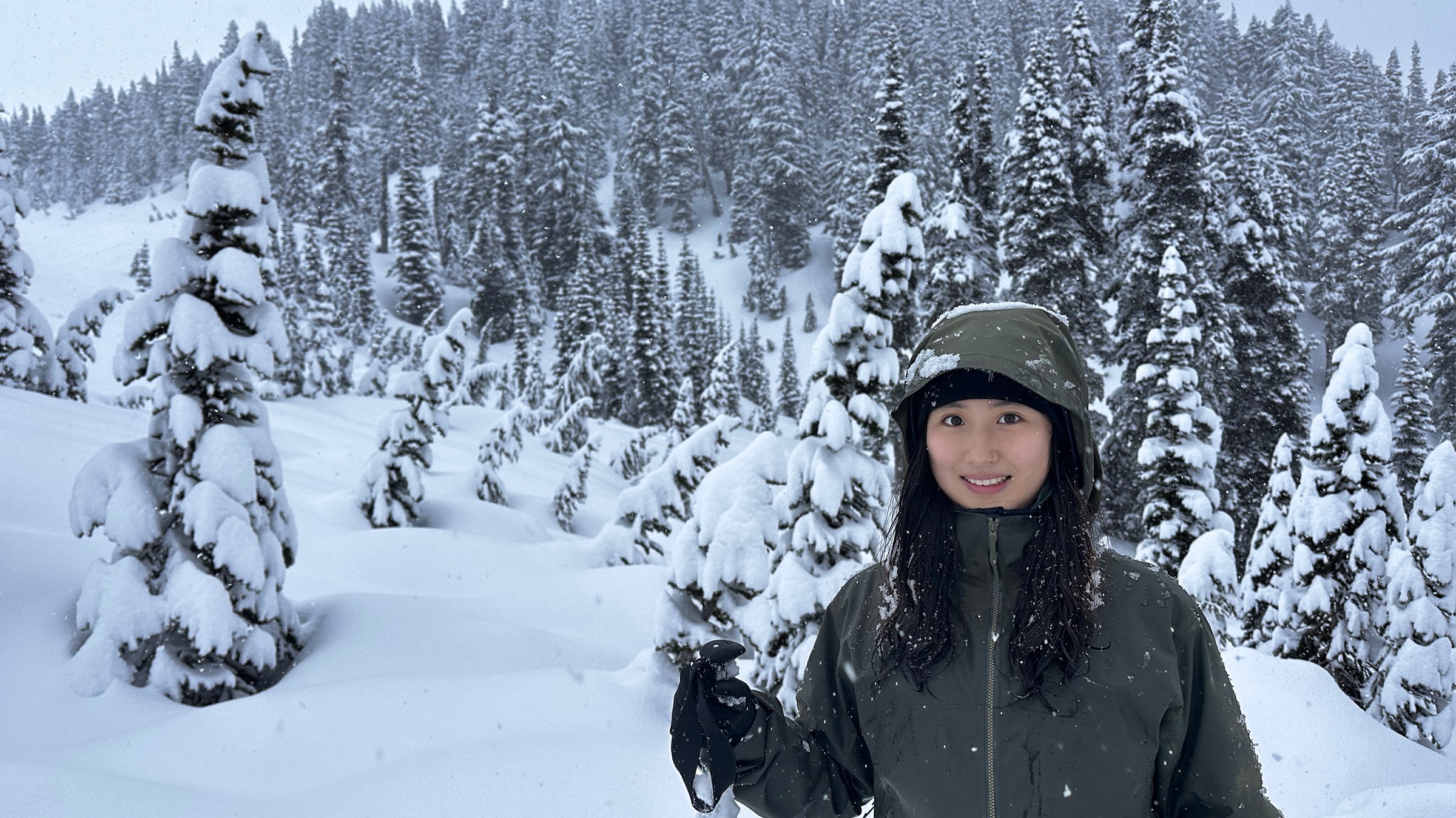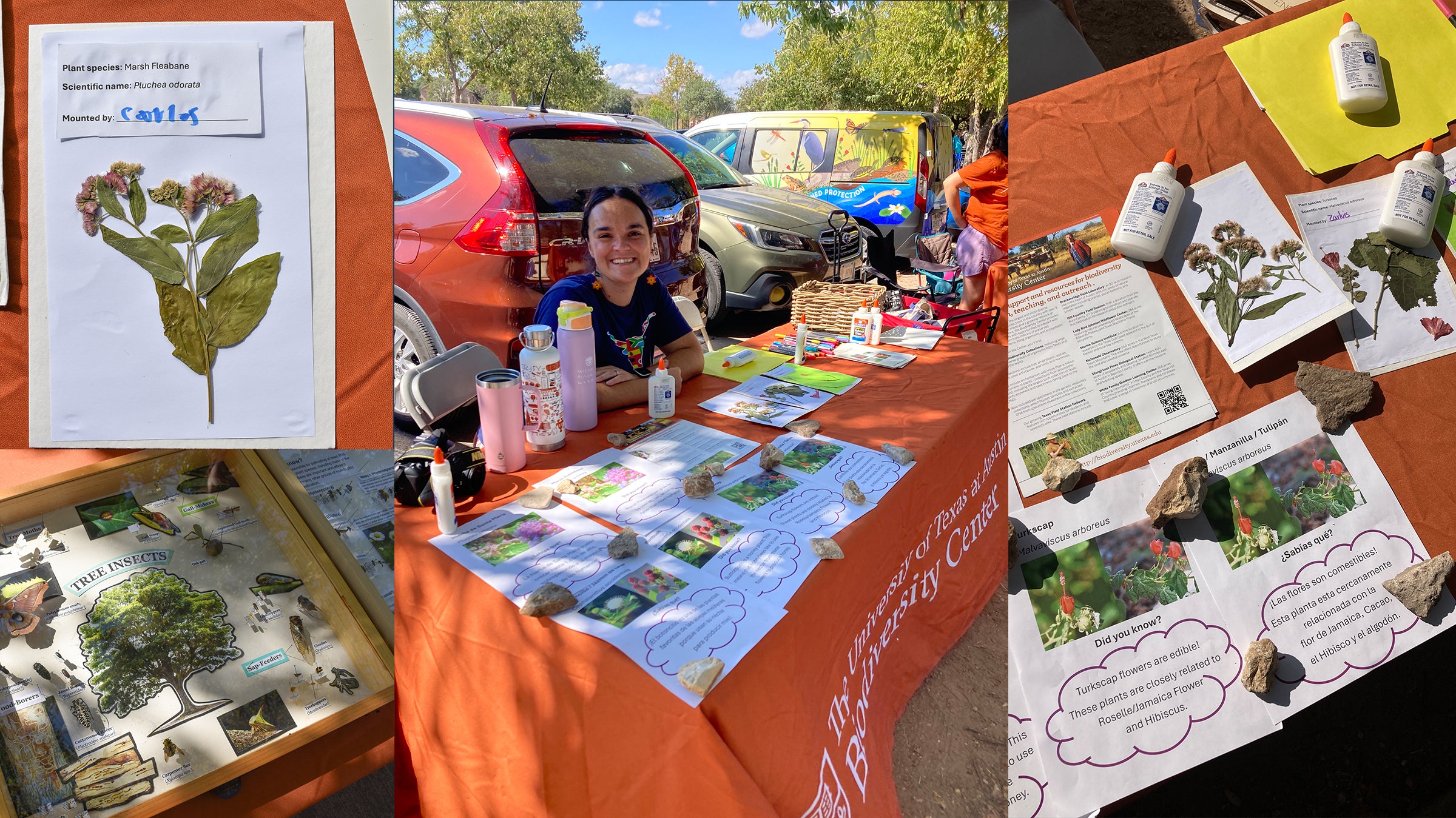
Center: Keri Greig sits at the Biodiversity Center table. Right and Left: various tabling items and mounted specimen. (Photos: Keri Greig and Zarluis Mijango.)
A big part of science education happens not just in academia, but in the general public. Keri Greig, a 2024 Stengl-Wyer Fellow, finds this to be particularly true for her own experience growing up and how she is involved in the various approaches to science today.
“Outreach is a key piece of being a scientist because it allows for the wonders of the world to be shared with a wide audience,” Keri explains. “The first step in the journey to learning more about the natural world is to develop an appreciation for the amazing plants and organisms that we are surrounded by every day of our lives.”
Putting these ideas into action, Keri and Zarluis Mijango (graduate student in Ecology, Evolution, and Behavior in the Department of Integrative Biology) recently participated in “Roots & Wings Festival.” This was a bi-lingual outreach event on October 18th organized by the North Austin Public Library. The library created an interactive activity for bi-lingual kids and adults, which focused on increasing awareness of the diversity of plant species that can be found growing in the Austin area. The activity encouraged members of the public to appreciate local plants through interesting facts and the creation of art.
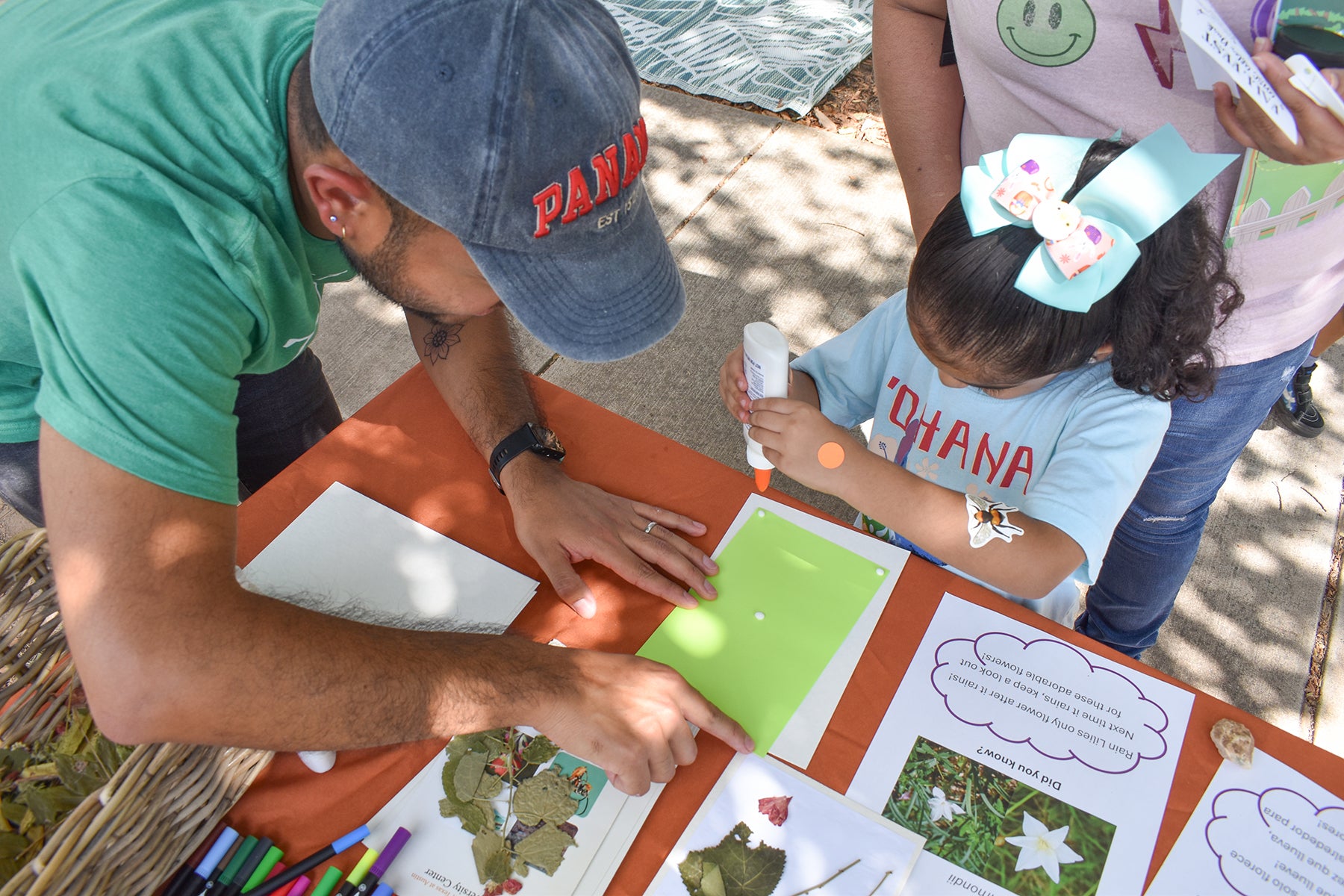
Zarluis with an eager young participant. (Photo: Keri Greig)
“Texas has a large Spanish-speaking population who often miss out on mainstream scientific outreach,” Keri explains. “Both Zarluis and I have been looking for opportunities to engage with this community during our time at UT. We feel passionately that language should not serve as a barrier to education and enjoyment of nature.”
Zarluis, who is from Panama, and Keri both speak both English and Spanish fluently, which they felt was a key part of their activity’s success. “I think that we probably spoke to equal numbers of people in Spanish and English, which meant that nobody was excluded from the activity based on the language that they spoke, and we could include a far greater number of folks in the outreach event. It was really amazing to see folks’ faces light up when they realized that they could participate and learn, even if they couldn’t speak English.”
Activities included mounting pre-collected and dried plant specimens onto sheets that participants could take home. Each sheet included a mounted plant specimen with the common and scientific name, along with the name of the individual participating in the event. Each plant also came with its own little story to provide participants with an extra appreciation of that species. Participants were able to take their mounted plant specimens home with them to serve as a reminder of what they learned during the activity.
Keri and Zarluis would like to thank Jessica Tessler (Youth Librarian, Austin Public Library, Little Walnut Creek Branch) for her vision for the event, the Billie L. Turner Plant Resources Center which forms part of the UT Biodiversity Collections, and the PRC’s Curator, George Yatskievych, for his willingness to refine the activity, for providing key resources, and for supporting the idea to bring plant biodiversity education to the outreach event.
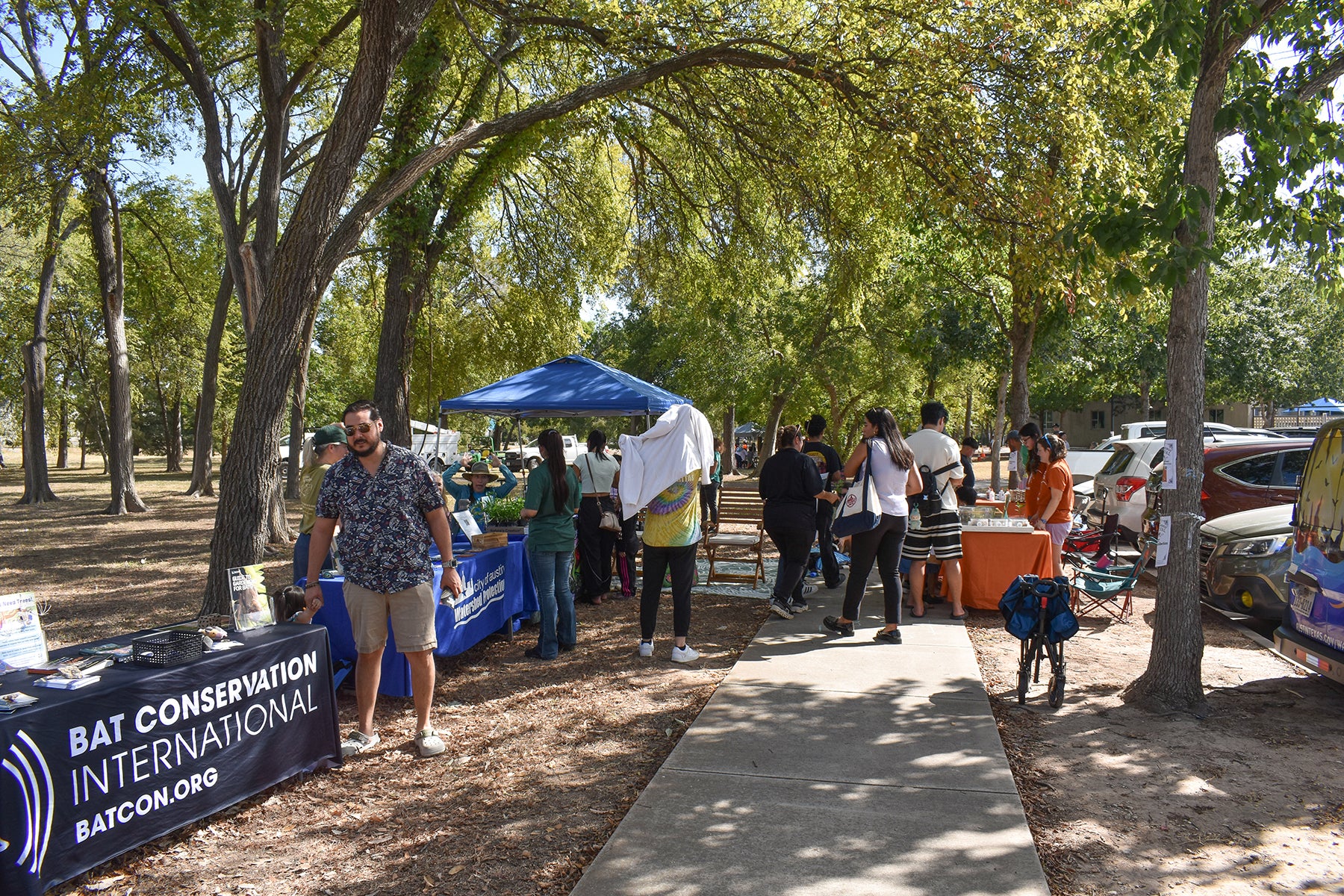
Other tables at the event. (Photo: Keri Greig)

